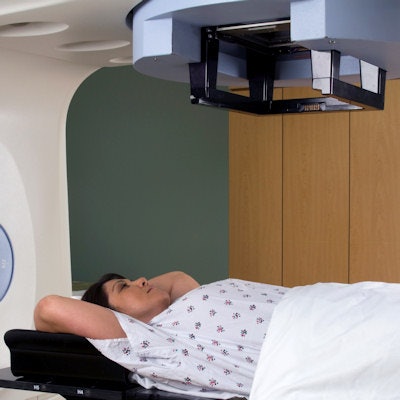
The combination of radiotherapy and chemotherapy treatment with anthracyclines in women who are survivors of childhood cancer increases their risk of breast cancer later in life, according to a study published online October 28 in JAMA Pediatrics.
The findings could help improve ongoing observation protocols for childhood cancer survivors, wrote a team led by Lene Veiga, PhD, of the U.S. National Cancer Institute in Bethesda, MD.
"The combination of anthracyclines and radiotherapy doses to the breast was associated with increased breast cancer risks and was greater than the sum of their individual effects, consistent with an additive interaction," the group wrote. "The results of this study may help inform surveillance guidelines for childhood cancer survivors."
Chest radiation to treat childhood cancer has been linked to increased incidence of breast cancer, and growing evidence indicates that the anthracycline chemotherapy drug class increases this risk, the researchers noted.
"Chemotherapy, especially anthracyclines, is increasingly being used to treat childhood cancers," the team wrote. "Anthracycline cardiotoxicity is well established, and emerging evidence suggests that these drugs also increase breast cancer risk among patients treated with or without chest radiation. Many patients receive both chemotherapy and radiotherapy, but, to our knowledge, the risk from the combination of anthracyclines and radiotherapy has not been studied."
Veiga's group investigated breast cancer risk in childhood cancer survivors after radiotherapy and chemotherapy and assessed whether disease risk varied by estrogen receptor (ER) status. The study included 14,358 five-year survivors of childhood cancer diagnosed between 1970 and 1986 and followed up through December 2016. All patients underwent radiation and chemotherapy; radiation exposures were to the breast tumor site and ovaries, and cumulative chemotherapy doses included anthracyclines and alkylating agents.
Of these cases, 271 were women who subsequently developed breast cancer (median age at first cancer diagnosis was 15, while median age for breast cancer diagnosis was 39). The team matched these women to a cohort of 1,044 control subjects by age at first cancer and follow-up duration and analyzed the data between September 2017 and July 2018, calculating odds ratios for subsequent breast cancer by ER status.
Of the 271 cancers, 201 were invasive (113 of these were ER-positive, 41 ER-negative, and 47 unknown) and 70 were ductal carcinoma in situ.
The odds ratio for breast cancer increased according to radiation dose to the breast (odds ratio per 10 Gy, 3.9) and was similar for both ER-positive and ER-negative cancers (odds ratio for ER-positive cancers per 10 Gy, 5.5; odds ratio for ER-negative cancers per 10 Gy, 4.8). Veiga's team also found the following:
- The odds ratio for breast cancer was higher in women who had a cumulative anthracycline dose.
- Women who had anthracycline treatment with radiotherapy had higher breast cancer risk compared with those who did not, with the highest risk at radiation doses of 10 Gy or more.
| Odds ratios for breast cancer by receipt of anthracyclines and radiation dose | |||
| All breast cancer cases | ER-positive invasive cases | ER-negative invasive cases | |
| No anthracyclines | 1 (reference) | 1 (reference) | 1 (reference) |
| Anthracyclines | 2.3 | 2.8 | 2.6 |
| Per 100 mg/m2 anthracycline (average) | 1.23 | 1.49 | 1.10 |
| Radiation dose of ≥ 10 Gy without anthracycline | 9.6 | 21.2 | 13.3 |
| Radiation dose of ≥ 10 Gy with anthracycline | 19.1 | 35.7 | 22.8 |
Veiga and colleagues hope the study findings will help clinicians develop better breast cancer surveillance protocols for women who are survivors of childhood cancer.
"The results suggest that the combination of anthracyclines and even moderate radiation doses to the breast (≥ 10 Gy) can increase breast cancer risks," the team concluded. "Our results may help inform risk management for patients with childhood cancer treated in the past, as well as potential breast cancer risk associated with current treatment protocols."




















